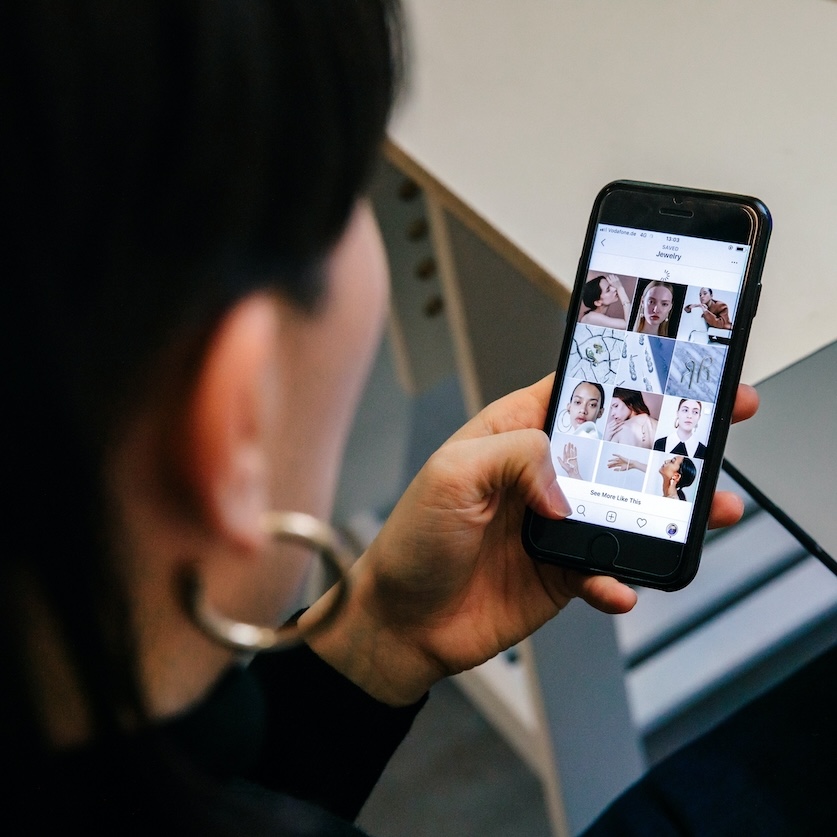What is Influencer Whitelisting on Meta Ads? And how do you set it up?

Here’s the reality behind-the-scenes.
Your consumers are scrolling on Instagram and seeing more than a handful of ads. Some in the form of influencer marketing, others intricately designed. And of course, there’s plenty of user-generated content (UGC) style creator ads in the mix…
Would they respond better – in terms of trust, engagement and perceived authenticity – if they saw the content run from @trustedcreator OR via @yourbrandname?
Keeping in mind that the very principle behind “social proof” is to offer third-party customer reviews, odds are the @trustedcreator post will be better received due to its seeming separation from the brand’s profile. Whether or not that’s truly the case.
It’s like having a mate talk you up at the bar, versus hyping up yourself.
And that is Influencer Whitelisting.
It’ll look familiar when you see it…

And by drawing clear associations between content creator AND brand, you’re essentially telling potential customers that influential voices are endorsing you.
Publicly, loudly, proudly and authentically.
So, whether you’re an eCommerce brand with a lean team or an advertiser just trying to scale user-generated content (UGC) even more, this is your guide to all things influencer whitelisting. How it works, how it benefits performance metrics, and how to set it all up.
How does Influencer Whitelisting work?
You would’ve gotten this by now, but at its core, whitelisting in digital advertising is when a content creator gives a brand permission to run paid ads through their handle, instead of the brand’s own Facebook page or Instagram profile.
This means:
- Ads that look and feel native – straight from the creator, not the brand.
- You can boost high-performing organic content with budget AND not blindly, because you’ll get access to advanced targeting strategies and ad formats. Why? Whitelisting is all set-up within Meta’s Ads Manager (controlled in the same way you would with paid ads) rather than blasted to any broad / undefined audience.
- You can write your own copy and creative variations to add any crucial callouts or product USPs — whilst still saying it all under the creator’s personal handle.
It’s like combining the trust of influencer partnerships, with the flexibility of Meta Ads.
You get every targeting option, every placement, the option to add CTAs with granular destination URLs, scheduling, ad spend caps, A/B testing functionalities, copy iterations, etc.
Amazing. Phenomenal. Exactly what we want. Next question.
How do you set up Influencer Whitelisting on Meta Ads?
Some things to note first.
- Your ad account must be public, and have a Business / Creator page. This includes both a Facebook page and Instagram account – which most brands already do.
- Your ad account must be connected to a Business Manager account, and linked to your respective social pages. If you don’t have one, head here to start.
On the creator’s end:
Creators or social media influencers you’re partnering with similarly need to have a public account, set-up as a Business or Creator as well. This is as simple as clicking “Switch to a Professional Account” under their settings and account type.
That should put all our ducks in a row.
Time for the good stuff.
Brand POV:
Once you’re in your Business Manager, you’ll need to navigate to “Business info” to retrieve some details that content creators / influencers will need to start collaborating.

- Find your Business Manager ID, which is likely a 15-digit numerical identifier.
- Copy those numbers, and send it straight to your chosen creators.
Creator POV:
Once you’ve received the brand’s Business Manager ID, head into your Business Manager portal and navigate to the “Partners” tab on the left-hand menu.

Follow the steps above to “Give a partner access to your assets” and you’ll see a pop-up field to enter the Business Manager ID you were sent by the brand:

Click “Next” (as you’d expect) and you’ll be prompted to grant access or “Assign assets and permissions” to the brand you’re partnering with. Make sure to select “Pages” and “Instagram accounts” to allow sharing of your content / posts with the brand.

Once this is all completed, and the access between both brand and creator is finalised, brands will be able to run such sponsored posts using influencers’ handle as the identity.
This is done during ad set-up.
Within Meta Ads Manager as per, you’ll see the option to select “Identities” (aka. profiles from which a Whitelisted ad will show from) – and brands can simply select their partnered content creator’s account, all done at ad level.

From here, you can also:
- Boost existing posts
- Create dark posts (i.e. Facebook or Instagram ads that don’t appear on feed)
- Run A/B tests with different ad copy or call-to-actions
What about Partnership Ads (fka. Branded Content Ads) instead?
Great question. This, in essence, is a faster and easier process to amplify a creator’s organic post and run ads through a creator account.
Instead of the brand needing backend access to a creator’s Meta assets (like in traditional whitelisting), creators can simply approve the brand partnership request directly in their Instagram DMs or notification tab.
It’s like hitting “Boost Post” – but on content from someone else already trusted.
To put it simply, here’s how this version of collaboration works:
- Creator tags the brand in their organic post using Meta’s branded content tool, which creates the “paid partnership” label.
- The brand receives a notification, and can then create a partnership ad using that post – directly from Ads Manager.
- Alternatively, the brand can also request ad creation access from the creator (via a direct message-style approval request.
- The creator / influencer will then approve the request in-app (e.g. Instagram), giving the brand permission to use their handle and content for paid social ads.
- No need for asset uploads or account access. Just clean, fast approvals and live ads.
What’s the benefit of doing all this?
In the early days of Influencer Whitelisting, our sister-agency Sticki pulled together a blog on things to know about its value and caveats. You can find it here.
But a few key takeaways?
A study shows that 49% of consumers believe in influencer recommendations more than branded content. Plus, it plays a significant role in their purchasing decisions.
So, now that you know how to run these creator-led brand promotions as paid ads within your full-funnel digital marketing strategy, you’ll likely get to enjoy:
- Amplified reach and influencer content: Whitelisted ads garner more eyes and engagement beyond the organic network of an influencer. Since brands have access to data on the influencer’s accounts, they can target even more audience segments whilst further reaching potential customers who aren’t already following the creator.
- Optimised content: By using A/B testing tools available in Ads Manager (and the hands of a digital marketing agency like us), whitelisting gives you the flexibility to optimise your content to improve the performance of each ad. You can run multiple versions of the same ad and refine it as necessary to maximise return on ad spend.
- Brand control without killing authenticity: The option to add or tweak captions, headlines, CTAs / destination URLs (etc.) means that both brand and creator can maintain distinct tones of voice and brand credibility. You’re getting all the controls of typical campaign management, but through trusted outlets beyond your own.
There’s still a handful of tips, tricks and things to watch whilst setting up whitelisting ads, but fortunately, our digital marketing experts do this on the daily.
Want help setting up your Meta Ads whitelisting process? Or want to know about this from a TikTok Ads lens? We’re more than ready to build you a bespoke high-performance UGC strategy (content included, if you’d like) – just chat with us here.
Glossary
What is influencer whitelisting?
Influencer whitelisting (aka. creator licensing) is a digital marketing strategy where a brand gains advertising access to a creator’s social media account. This allows the brand to run paid ads through the creator’s Instagram, TikTok or Facebook handle – boosting reach, engagement, and conversion rates with authentic, creator-backed content. It blends the trust of influencer marketing with the power of performance marketing.
What is social proof?
Social proof is the psychological phenomenon where people copy or mimic the actions of others to reflect “correct” behavior. In digital marketing, it refers to the use of customer reviews, testimonials, user-generated content, trends, and influencer endorsements to build trust and credibility with potential customers.
What counts as user-generated content (UGC)?
User-generated content (UGC) includes any content – videos, images, text, or customer reviews – created by real users or consumers rather than the brand itself. UGC can be unpaid (i.e. organically shared by fans) or paid (i.e. commissioned from creators), and it's widely used in social media marketing to boost authenticity and engagement.
What is a full-funnel digital marketing strategy?
A full-funnel digital marketing strategy is an approach that targets every stage of the customer journey – from awareness and consideration, to conversion and loyalty. It uses tailored tactics like paid ads (incl. Meta Ads, Google Ads, TikTok Ads), email marketing, CRO and retargeting to guide potential customers through the funnel and maximise ROI.
Ready to make those big goals a reality?
Chat With Our Team
BUILT TO BREAK BOUNDARIES
BUILT TO BREAK BOUNDARIES
BUILT TO BREAK BOUNDARIES
BUILT TO BREAK BOUNDARIES
BUILT TO BREAK BOUNDARIES
BUILT TO BREAK BOUNDARIES
BUILT TO BREAK BOUNDARIES
BUILT TO BREAK BOUNDARIES
BUILT TO BREAK BOUNDARIES
BUILT TO BREAK BOUNDARIES









.avif)

.avif)
